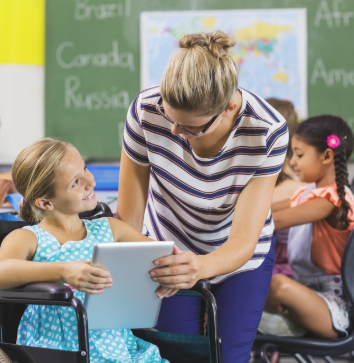Inclusive education is built on the principle that every student deserves the opportunity to succeed, regardless of physical, cognitive, or sensory differences. Thanks to advancements in accessible technology, learners with disabilities now have more tools than ever to support their educational journey. These innovations help create learning environments that are inclusive, adaptable, and empowering.
Assistive Technologies in the Classroom and at Home
Assistive tech includes tools designed to support specific needs. Screen readers, text-to-speech programs, speech-to-text software, and Braille displays help students with visual or reading challenges access written content. For students with motor impairments, adaptive keyboards, switch devices, and voice-controlled interfaces offer new ways to interact with digital materials. These tools help remove barriers and give students more autonomy in their learning, making it possible for them to engage in classroom activities alongside their peers.
Customized Learning with Adaptive Software
Adaptive learning platforms adjust content based on each student’s abilities and progress. These tools provide personalized instruction, allowing students to work at their own pace and in ways that align with their strengths. For example, a learner with attention difficulties may benefit from simplified layouts and shorter learning modules, while another may need visual schedules or audio instructions. These tools often use artificial intelligence to monitor progress and provide real-time feedback, helping teachers and students make data-informed decisions about learning strategies.
Visual and Auditory Support Tools
Closed captioning, subtitles, and audio description services make video content accessible to students who are deaf, hard of hearing, or visually impaired. Interactive whiteboards and graphic organizers support students with learning disabilities by presenting information in clear and organized formats. Digital highlighters, color overlays, and screen magnifiers help improve reading comprehension for students with dyslexia. These tools reduce barriers and support better comprehension by adapting content delivery to suit the learner’s preferred mode of processing information.
Communication Tools for Nonverbal Students
Augmentative and alternative communication (AAC) devices, such as speech-generating apps and symbol-based communication boards, provide students with limited or no verbal speech the ability to express themselves. These technologies foster social interaction, participation, and academic engagement. AAC tools are now available on mobile phones and tablets, making them more affordable and portable, allowing students to use them not just in school, but also at home and in the community.
User-Friendly Interfaces and Simplified Navigation
Technology designed with accessibility in mind often features easy-to-navigate interfaces, adjustable text sizes, and high-contrast visuals. These design choices help students with low vision, dyslexia, or cognitive challenges use educational platforms more independently and confidently. Voice navigation, customizable shortcuts, and screen readers with natural-sounding speech are making devices and software more intuitive and accessible for all users.
Teacher and Caregiver Support
Educators and families play a vital role in supporting differently-abled learners. Many tech platforms now offer tutorials, training modules, and customizable settings to help caregivers and teachers adapt tools to the needs of each student. Teachers can use data dashboards to track student progress, identify gaps, and tailor instruction accordingly. Professional development programs focused on inclusive teaching practices are helping educators make the most of accessible technology in the classroom.
Promoting Independence and Confidence
Accessible technology empowers students by giving them greater control over their learning. With the right tools, differently-abled learners can participate fully in class activities, communicate their ideas, and demonstrate their knowledge. This independence builds self-esteem and a sense of achievement. Students who once struggled to engage with traditional methods are now able to thrive, thanks to tools that cater to their unique learning profiles.
Ongoing Innovation and Future Possibilities
The field of accessible technology continues to evolve. Emerging innovations like eye-tracking systems, wearable communication devices, and AI-powered tutoring apps are expanding what’s possible for differently-abled learners. Virtual reality (VR) and augmented reality (AR) are being explored for their potential to create immersive, customizable learning experiences that adapt to each student’s needs. As these technologies become more widely available and affordable, they promise to further reduce barriers and enhance inclusive education.
Conclusion
Accessible technology is transforming education by removing barriers and opening new opportunities for differently-abled learners. By integrating inclusive tools into classrooms and homes, educators and families can create supportive environments where all students thrive. As innovation continues, accessibility will remain at the heart of meaningful, equitable education for everyone. The commitment to inclusive learning not only benefits students with disabilities, but also enriches the educational experience for all learners by fostering empathy, collaboration, and diversity.


